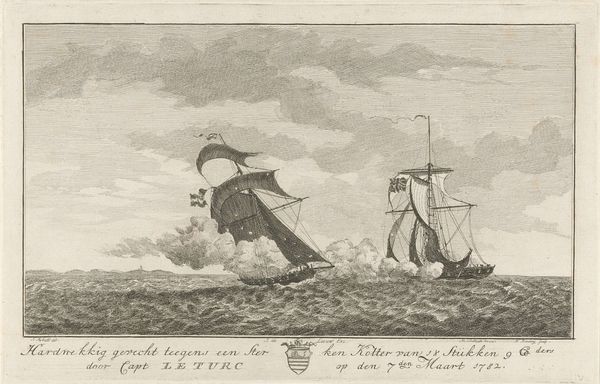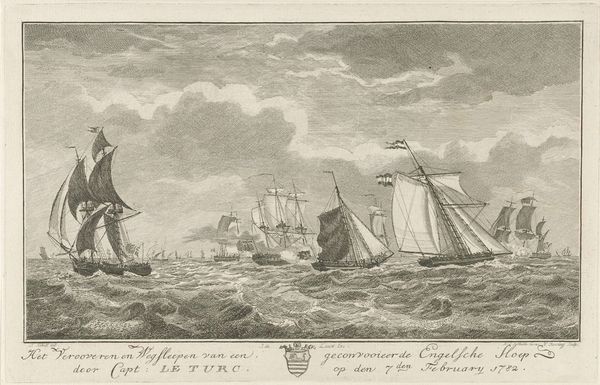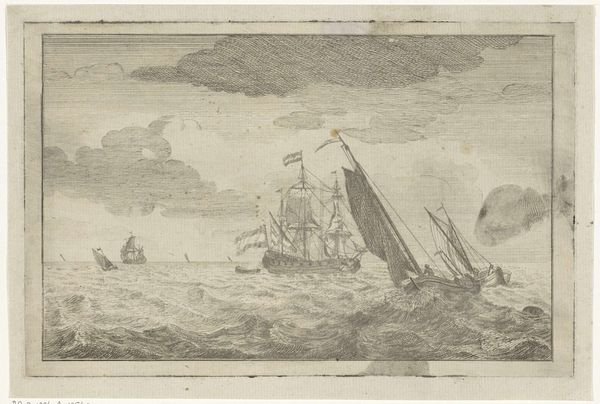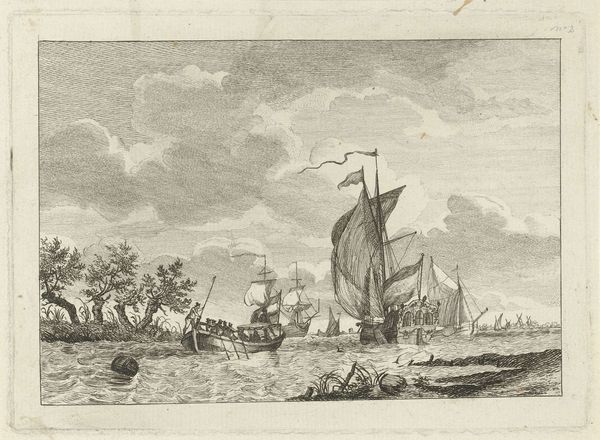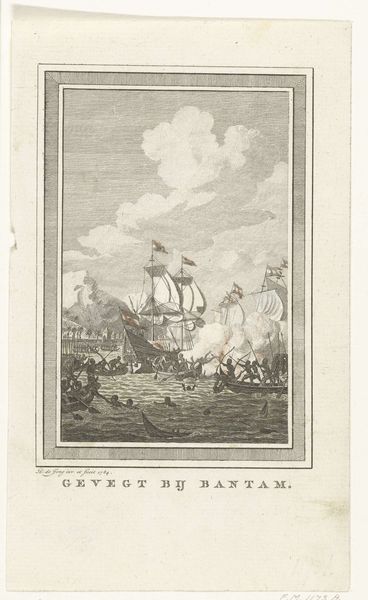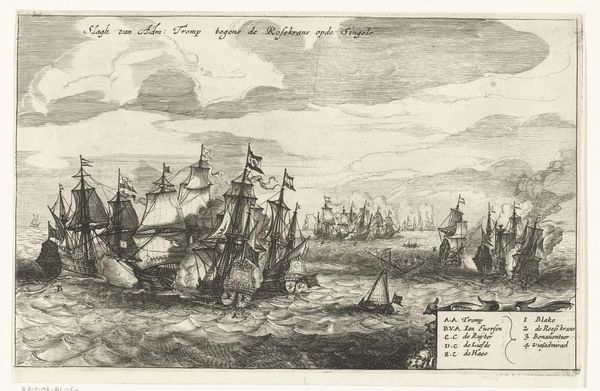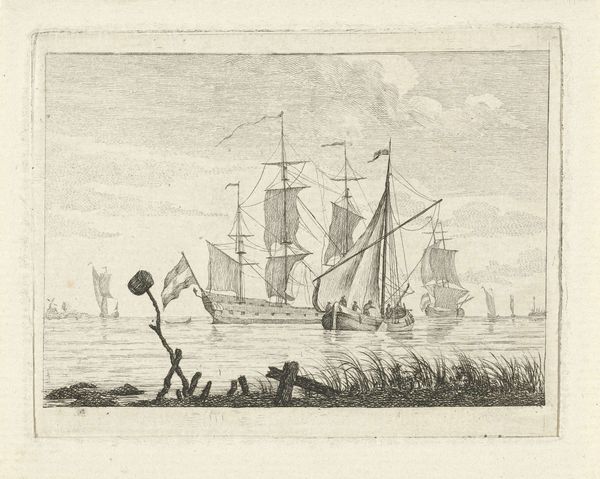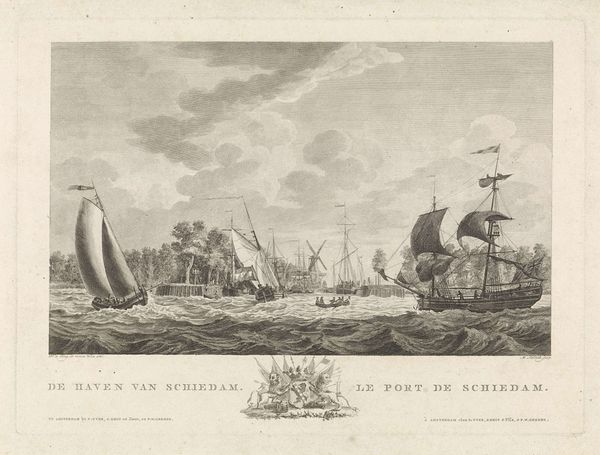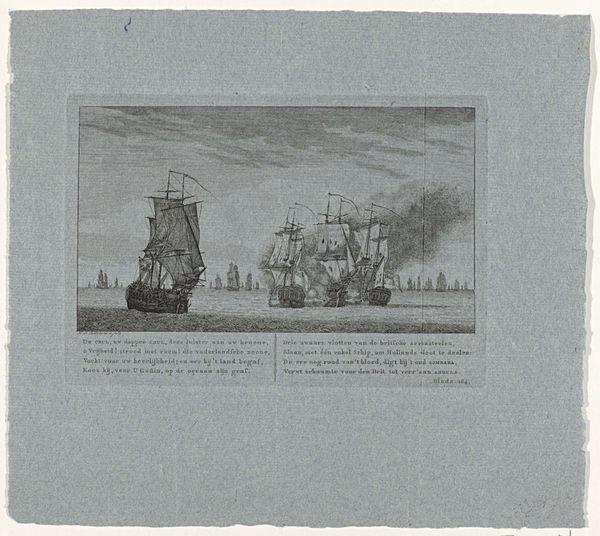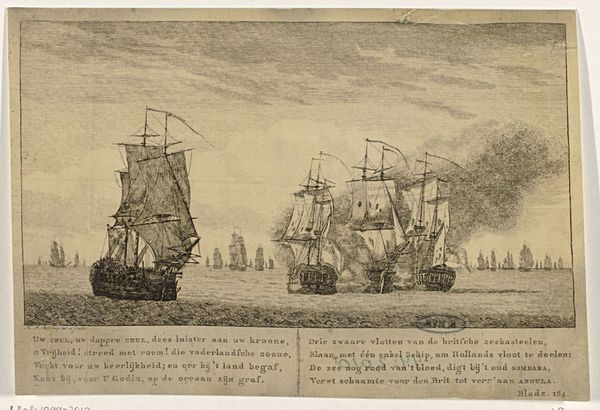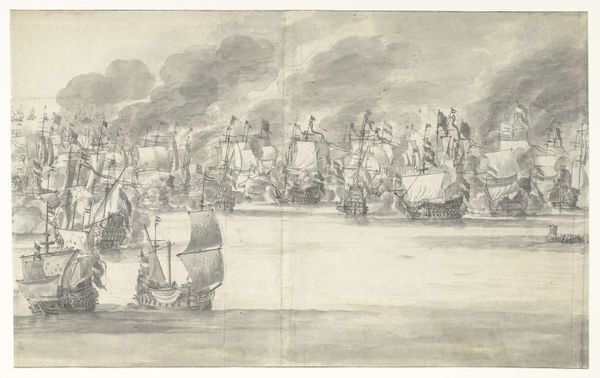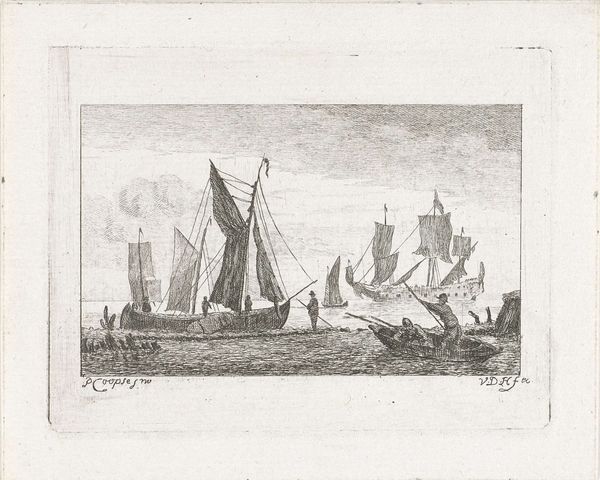
print, engraving
# print
#
landscape
#
line
#
history-painting
#
engraving
Dimensions: height 160 mm, width 247 mm
Copyright: Rijks Museum: Open Domain
Editor: So, this is "Gevecht tegen vier loggers, 1782," or "Battle Against Four Loggers, 1782," by Hendrik Roosing. It’s an engraving. There’s so much turbulence visualized here—between the ships, the smoke, and those heavy clouds. I'm wondering what stories are embedded in an image like this? How would you interpret it? Curator: Considering it from a historical viewpoint, it captures not just a naval skirmish, but a moment laden with socio-political implications. Prints like these often served as visual propaganda. Notice how Roosing depicts the battle. Do you think it's trying to glorify the event? Editor: Well, the word "Hardnekkig," or "stubborn" is in the caption, which suggests pride. Was there a broader meaning that people would understand at the time? Curator: Exactly. These depictions often played a crucial role in shaping public perception. These were often commissioned and widely distributed. Think about how a seemingly simple battle scene like this contributes to national identity and validates specific political agendas through visual storytelling. Who was this Capt. Le Turc? Do some research, you may find this work immortalized someone who was previously rather obscure! Editor: That makes a lot of sense. I guess I was seeing the aesthetic qualities first. I now realize that the image's public function really shaped its message. Curator: Precisely. Studying the image, it’s important to view it not as an isolated piece, but as part of a broader system that promotes national pride and political legitimization. That’s the lens that tells us about society at the time. Editor: Thanks, I’ve never thought about prints in exactly that way before! It gives me so much to think about!
Comments
No comments
Be the first to comment and join the conversation on the ultimate creative platform.
